Showing Spotlights 2121 - 2128 of 2783 in category All (newest first):
 There is a general perception that nanotechnologies will have a significant impact on developing 'green' and 'clean' technologies with considerable environmental benefits - be it in areas ranging from water treatment to energy breakthroughs and hydrogen applications. As a matter of fact, renewable energy applications probably are the areas where nanotechnology will make its first large-scale commercial breakthroughs. Conflicting with this positive message is the growing body of research that raises questions about the potentially negative effects of engineered nanoparticles on human health and the environment. However, there is one area of nanotechnology that so far hasn't received the necessary attention: the actual processes of manufacturing nanomaterials and the environmental footprint they create, in absolute terms and in comparison with existing industrial manufacturing processes. Analogous to other industrial manufacturing processes, nanoproducts must proceed through various manufacturing stages to produce a material or device with nanoscale dimensions.
There is a general perception that nanotechnologies will have a significant impact on developing 'green' and 'clean' technologies with considerable environmental benefits - be it in areas ranging from water treatment to energy breakthroughs and hydrogen applications. As a matter of fact, renewable energy applications probably are the areas where nanotechnology will make its first large-scale commercial breakthroughs. Conflicting with this positive message is the growing body of research that raises questions about the potentially negative effects of engineered nanoparticles on human health and the environment. However, there is one area of nanotechnology that so far hasn't received the necessary attention: the actual processes of manufacturing nanomaterials and the environmental footprint they create, in absolute terms and in comparison with existing industrial manufacturing processes. Analogous to other industrial manufacturing processes, nanoproducts must proceed through various manufacturing stages to produce a material or device with nanoscale dimensions.
Oct 22nd, 2008
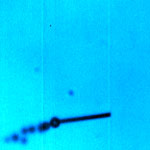 Nanoscale membranes are of great interest to researchers not only for nanofiltration applications but also in areas such as flexible electronics, extremely sensitive sensors, nanomedical applications and biomolecular research. Many of these applications would require the nanomembranes to be arranged in three-dimensional structures such as tubes, helices, rings, or wrinkles. So far, the roll-up of ultra-thin layers was heavily limited in materials choice, in most cases involving epitaxial semiconductor layers. The fabrication often requires a selective underetching procedure to release the nanomembranes from their substrate, a process which not only removes the underlying sacrificial layer but also in many cases dissolves the nanomembrane material itself. A new approach developed by scientists in Germany and Hong Kong now allows controlled fabrication of pure metal and oxide tubes as well as many other material combinations. They describe a general method to produce well-defined micro- and nanotubes from thin solid films deposited by mass production tools.
Nanoscale membranes are of great interest to researchers not only for nanofiltration applications but also in areas such as flexible electronics, extremely sensitive sensors, nanomedical applications and biomolecular research. Many of these applications would require the nanomembranes to be arranged in three-dimensional structures such as tubes, helices, rings, or wrinkles. So far, the roll-up of ultra-thin layers was heavily limited in materials choice, in most cases involving epitaxial semiconductor layers. The fabrication often requires a selective underetching procedure to release the nanomembranes from their substrate, a process which not only removes the underlying sacrificial layer but also in many cases dissolves the nanomembrane material itself. A new approach developed by scientists in Germany and Hong Kong now allows controlled fabrication of pure metal and oxide tubes as well as many other material combinations. They describe a general method to produce well-defined micro- and nanotubes from thin solid films deposited by mass production tools.
Oct 21st, 2008
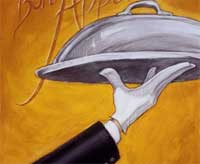 The European Commission's current assessment of nanotechnology applications to the food chain range from the almost certain (e.g., membranes, antibacterials, flavors, filters, food supplements, stabilizers) through to the probable (e.g., pathogen and contaminant sensors, environmental monitors, coupled sensing and warning devices, and remote sensing and tracking devices) to the improbable (e.g., 'creating unlimited amounts of food by synthesis at the atomic level'). The European Commission has now decided that it would like to address the possible safety issues arising from nanoscience and nanotechnologies in a stepwise fashion, thereby facilitating the establishment of a roadmap for future actions in the area of food and feed safety and the environment. As a first step in this exercise, the Commission has asked the European Food Safety Authority (EFSA) to prepare a scientific opinion in order to identify the needs for risk assessment, to assess the appropriateness of methods for risk assessment, and to perform an assessment of the potential risks posed by nanoscience and nanotechnologies in the food and feed area, and assess the appropriateness of current risk assessment methods.
The European Commission's current assessment of nanotechnology applications to the food chain range from the almost certain (e.g., membranes, antibacterials, flavors, filters, food supplements, stabilizers) through to the probable (e.g., pathogen and contaminant sensors, environmental monitors, coupled sensing and warning devices, and remote sensing and tracking devices) to the improbable (e.g., 'creating unlimited amounts of food by synthesis at the atomic level'). The European Commission has now decided that it would like to address the possible safety issues arising from nanoscience and nanotechnologies in a stepwise fashion, thereby facilitating the establishment of a roadmap for future actions in the area of food and feed safety and the environment. As a first step in this exercise, the Commission has asked the European Food Safety Authority (EFSA) to prepare a scientific opinion in order to identify the needs for risk assessment, to assess the appropriateness of methods for risk assessment, and to perform an assessment of the potential risks posed by nanoscience and nanotechnologies in the food and feed area, and assess the appropriateness of current risk assessment methods.
Oct 20th, 2008
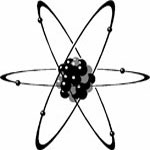 Poll after poll shows that most people today, assuming they have even heard the term, don't understand what nanotechnology is. Those who have heard about it are often misinformed by science fiction books and movies or tend to either focus on hype or fear surrounding available information about nanotechnologies. A team of scientists have described the key issues quite nicely: There is a general recognition that few people understand the implications of the technology, the technology itself or even the definition of the word. This lack of understanding stems from a lack of knowledge about science in general but more specifically difficulty in grasping the size scale and symbolism of nanotechnology. A potential key to informing the general public is establishing the ability to comprehend the scale of nanotechnology. Transitioning from the macro to the nanoscale seems to require an ability to comprehend scales of one-billion. Scaling is a skill not common in most individuals and tests of their ability to extrapolate size based upon scaling a common object demonstrates that most individuals cannot scale to the extent needed to make the transition to nanoscale.
Poll after poll shows that most people today, assuming they have even heard the term, don't understand what nanotechnology is. Those who have heard about it are often misinformed by science fiction books and movies or tend to either focus on hype or fear surrounding available information about nanotechnologies. A team of scientists have described the key issues quite nicely: There is a general recognition that few people understand the implications of the technology, the technology itself or even the definition of the word. This lack of understanding stems from a lack of knowledge about science in general but more specifically difficulty in grasping the size scale and symbolism of nanotechnology. A potential key to informing the general public is establishing the ability to comprehend the scale of nanotechnology. Transitioning from the macro to the nanoscale seems to require an ability to comprehend scales of one-billion. Scaling is a skill not common in most individuals and tests of their ability to extrapolate size based upon scaling a common object demonstrates that most individuals cannot scale to the extent needed to make the transition to nanoscale.
Oct 17th, 2008
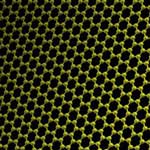 While individual carbon nanotubes could find applications in nanoelectronics, in order to exploit their intriguing properties on the macroscale, for instance in thin films and membranes, many trillions of these tubes must be assembled. These macroscopic aggregates are commonly called buckypapers - thin sheets made from intertwined carbon nanotubes. Buckypapers could find numerous applications: As one of the most thermally conductive materials known, buckypaper could lead to the development of more efficient heat sinks for chips; a more energy-efficient and lighter background illumination material for displays; a protective material for electronic circuits from electromagnetic interference due to its unusually high current-carrying capacity; or switchable surfaces. Borrowing a technology from the textile industry, researchers have developed a novel nanotechnology fabrication technique that results in high-quality CNT membranes with controllable thickness and topology at high-speed and low-cost for many practical applications.
While individual carbon nanotubes could find applications in nanoelectronics, in order to exploit their intriguing properties on the macroscale, for instance in thin films and membranes, many trillions of these tubes must be assembled. These macroscopic aggregates are commonly called buckypapers - thin sheets made from intertwined carbon nanotubes. Buckypapers could find numerous applications: As one of the most thermally conductive materials known, buckypaper could lead to the development of more efficient heat sinks for chips; a more energy-efficient and lighter background illumination material for displays; a protective material for electronic circuits from electromagnetic interference due to its unusually high current-carrying capacity; or switchable surfaces. Borrowing a technology from the textile industry, researchers have developed a novel nanotechnology fabrication technique that results in high-quality CNT membranes with controllable thickness and topology at high-speed and low-cost for many practical applications.
Oct 15th, 2008
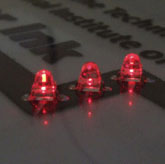 Ink-jet printing of metal nanoparticles for conductive metal patterns has attracted great interest as an alternative to expensive fabrication techniques like vapor deposition. The bulk of the research in this area focuses on printing metal nanoparticle suspensions for metallization. For example, silver and gold nanoparticle suspensions have been inkjet printed to build active microelectromechanical systems (MEMS), flexible conductors and radio frequency identification (RFID) tags. Nobel metals like silver and gold are preferred nanoparticles for ink-jet formulations because they are good electrical conductors and they do not cause oxidation problems. However, gold and silver still are too expensive for most high volume, ultra low-cost applications such as RFID tags with required unit costs below one cent. A new technique developed in Switzerland uses flame spray synthesis in combination with a simple in-situ functionalization step to synthesize graphene coated copper nanoparticles which are air-stable and can be easily handled at ambient conditions. This work illustrates graphene's potential as a protective shell material for nanoparticles, enabling control and design of the chemical reactivity of non-noble metals.
Ink-jet printing of metal nanoparticles for conductive metal patterns has attracted great interest as an alternative to expensive fabrication techniques like vapor deposition. The bulk of the research in this area focuses on printing metal nanoparticle suspensions for metallization. For example, silver and gold nanoparticle suspensions have been inkjet printed to build active microelectromechanical systems (MEMS), flexible conductors and radio frequency identification (RFID) tags. Nobel metals like silver and gold are preferred nanoparticles for ink-jet formulations because they are good electrical conductors and they do not cause oxidation problems. However, gold and silver still are too expensive for most high volume, ultra low-cost applications such as RFID tags with required unit costs below one cent. A new technique developed in Switzerland uses flame spray synthesis in combination with a simple in-situ functionalization step to synthesize graphene coated copper nanoparticles which are air-stable and can be easily handled at ambient conditions. This work illustrates graphene's potential as a protective shell material for nanoparticles, enabling control and design of the chemical reactivity of non-noble metals.
Oct 14th, 2008
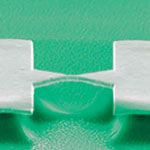 Using single molecules as electronic components is the ultimate goal for future electronic nanotechnology devices. In order to explore the electronic properties of a single molecule, researchers have to make electrical contact between electrodes and molecules - and this has proven to be a big challenge. The problem is forming stable and reproducible molecular bridges and determining their electrical properties. It has already been shown that molecular bridges can be formed. However, their mechanical stability and reproducibility is usually low. Whether it is really possible to form a single stable molecular bridge, which can act as a 'normal' electrical component at room temperature has yet to be answered. An important step in this direction will be to identify all the mechanics involved in single atom contacts.
Using single molecules as electronic components is the ultimate goal for future electronic nanotechnology devices. In order to explore the electronic properties of a single molecule, researchers have to make electrical contact between electrodes and molecules - and this has proven to be a big challenge. The problem is forming stable and reproducible molecular bridges and determining their electrical properties. It has already been shown that molecular bridges can be formed. However, their mechanical stability and reproducibility is usually low. Whether it is really possible to form a single stable molecular bridge, which can act as a 'normal' electrical component at room temperature has yet to be answered. An important step in this direction will be to identify all the mechanics involved in single atom contacts.
Oct 13th, 2008
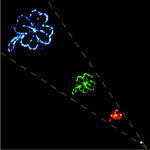 The long-term vision of revolutionary bottom-up nanotechnology is based on two different concepts of molecular assembly technologies. One follows Nature's blueprint, which uses molecular recognition for self-assembly of nanoscale materials and structures; the other is man-made and uses instruments to assemble nanoscale building blocs into larger structures and devices. In contrast, the most common nanoscale fabrication techniques used today, for instance in the sub 100-nanometer semiconductor industry, are top-down approaches where fabrication technologies such as lithography or stamping are used. Here, you create ever smaller structures by starting with a block of material and remove the bits and pieces you don't want until you get the shape and size you do want. While top-down techniques can be highly parallel (semiconductor industry) it is not feasible to control single molecules with them. Using a hybrid approach that combines the precision of an atomic force microscope with the selectivity of DNA interactions, researchers in Germany have successfully demonstrated a technique that fills the gap between top-down and bottom-up since it allows for the control of single molecules with the precision of atomic force microscopy and combines it with the selectivity of self-assembly.
The long-term vision of revolutionary bottom-up nanotechnology is based on two different concepts of molecular assembly technologies. One follows Nature's blueprint, which uses molecular recognition for self-assembly of nanoscale materials and structures; the other is man-made and uses instruments to assemble nanoscale building blocs into larger structures and devices. In contrast, the most common nanoscale fabrication techniques used today, for instance in the sub 100-nanometer semiconductor industry, are top-down approaches where fabrication technologies such as lithography or stamping are used. Here, you create ever smaller structures by starting with a block of material and remove the bits and pieces you don't want until you get the shape and size you do want. While top-down techniques can be highly parallel (semiconductor industry) it is not feasible to control single molecules with them. Using a hybrid approach that combines the precision of an atomic force microscope with the selectivity of DNA interactions, researchers in Germany have successfully demonstrated a technique that fills the gap between top-down and bottom-up since it allows for the control of single molecules with the precision of atomic force microscopy and combines it with the selectivity of self-assembly.
Oct 10th, 2008
 There is a general perception that nanotechnologies will have a significant impact on developing 'green' and 'clean' technologies with considerable environmental benefits - be it in areas ranging from water treatment to energy breakthroughs and hydrogen applications. As a matter of fact, renewable energy applications probably are the areas where nanotechnology will make its first large-scale commercial breakthroughs. Conflicting with this positive message is the growing body of research that raises questions about the potentially negative effects of engineered nanoparticles on human health and the environment. However, there is one area of nanotechnology that so far hasn't received the necessary attention: the actual processes of manufacturing nanomaterials and the environmental footprint they create, in absolute terms and in comparison with existing industrial manufacturing processes. Analogous to other industrial manufacturing processes, nanoproducts must proceed through various manufacturing stages to produce a material or device with nanoscale dimensions.
There is a general perception that nanotechnologies will have a significant impact on developing 'green' and 'clean' technologies with considerable environmental benefits - be it in areas ranging from water treatment to energy breakthroughs and hydrogen applications. As a matter of fact, renewable energy applications probably are the areas where nanotechnology will make its first large-scale commercial breakthroughs. Conflicting with this positive message is the growing body of research that raises questions about the potentially negative effects of engineered nanoparticles on human health and the environment. However, there is one area of nanotechnology that so far hasn't received the necessary attention: the actual processes of manufacturing nanomaterials and the environmental footprint they create, in absolute terms and in comparison with existing industrial manufacturing processes. Analogous to other industrial manufacturing processes, nanoproducts must proceed through various manufacturing stages to produce a material or device with nanoscale dimensions. 
 Subscribe to our Nanotechnology Spotlight feed
Subscribe to our Nanotechnology Spotlight feed





